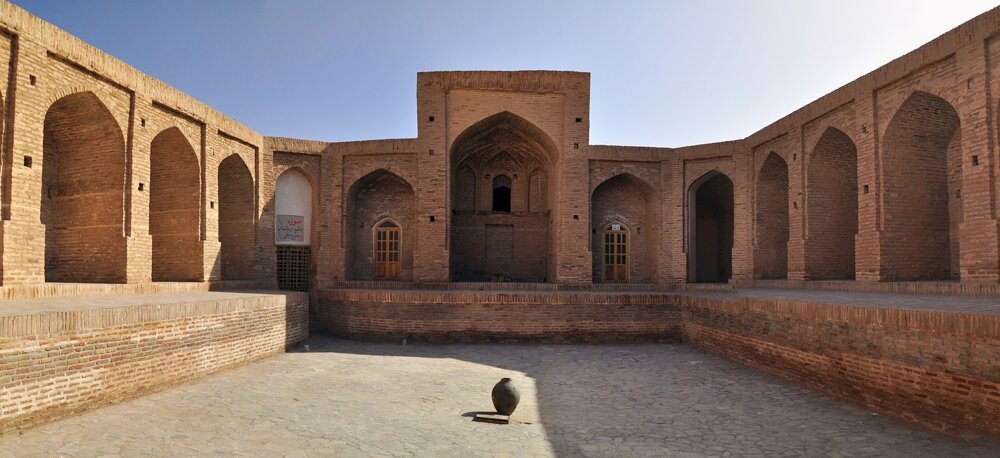Sarayan caravanserai restored to former glory

TEHRAN – The centuries-old Sarayan caravanserai, which is located in a barren landscape in eastern Iran, has gained its former state after years of restoration.
Adjacent to the caravanserai is a public bathhouse, a mudbrick cistern, and a vaulted bazaar, all of which are being prepared for a possible inscription on the UNESCO World Heritage list, a local official said on Monday.
Inscribed on the National Heritage list in 2003, the caravanserai, which is situated in South Khorasan province, is home to a museum of anthropology.
In their heyday, caravanserais were always kept open for all arrivals from early dawn until late in the evening. Last year, the tourism ministry announced that Iran is developing a dossier for a selection of its historical caravanserais for a possible inscription on the UNESCO World Heritage list.
Caravanserai is a compound word combining “caravan” with “Sara”. The former stands for a group of travelers and Sara means the building. They often had massive portals supported by elevated load-bearing walls. Guest rooms were constructed around the courtyard and stables behind them with doors in the corners of the yard.
Iran’s earliest caravanserais were built during the Achaemenid era (550 -330 BC). For many travelers to Iran, staying in or even visiting a centuries-old caravanserai can be a wide experience as they have an opportunity to feel the past, a time travel back into a forgotten age.
Caravanserais were usually constructed outside the walls of a town or village. The structure is quadrangular in form and is enclosed by a massive wall that has small windows near the top and only a few narrow air holes near the bottom. Inside, the ground floor consists of a central court surrounded by a cloister-like arcade, which is in turn surrounded by cellular storerooms.
The ground floor is connected by broad, open, stone stairways to a second story that is ringed by a somewhat lighter arcade, which gives access to many small rooms. The court is open to the sky and has a well with a fountain basin in its center.
In their heyday, caravanserais were always kept open for all arrivals from early dawn until late in the evening. Some caravansaries are of modest architectural merit, with well-hewn, massive walls and impressive proportions. Their gates are often decorated with intricate carving, as is the prayer niche within.
At night while you are standing on the roof of the isolated building imagining what it must have been like to see camel caravans coming across the barren desert while the sun is disappearing behind the mountains to the west. Don’t worry about the amenities, there are many ancient caravansaries, which have been fully restored and equipped to be boutique hotels or so.
South Khorasan is home to many historical and natural attractions such as Birjand Castle, Dragon Cave, Furg Citadel, and Polond Desert. It is also known for its famous rugs as well as its saffron and barberry which are produced in almost all parts of the province.
AFM
